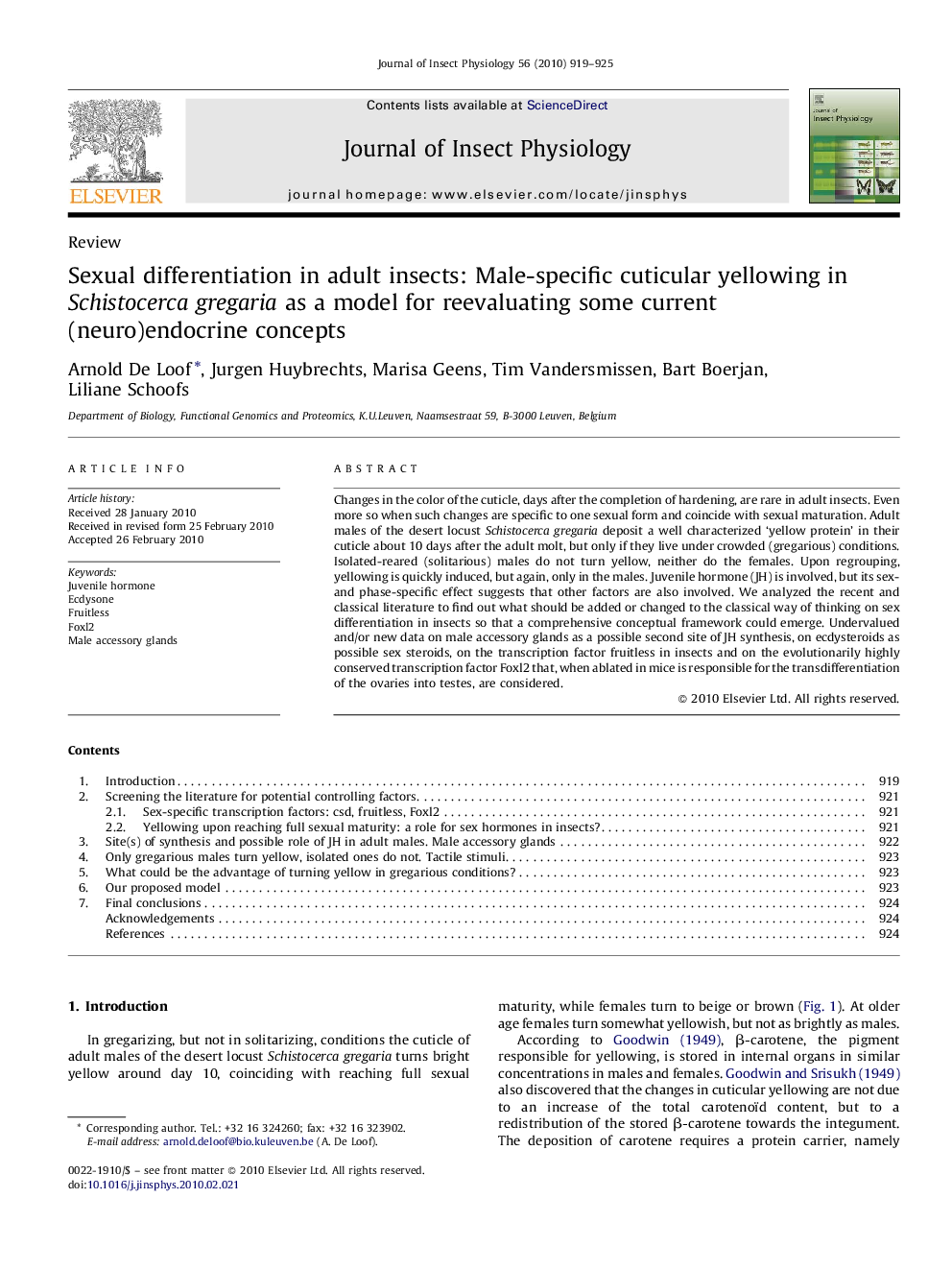| Article ID | Journal | Published Year | Pages | File Type |
|---|---|---|---|---|
| 2840710 | Journal of Insect Physiology | 2010 | 7 Pages |
Changes in the color of the cuticle, days after the completion of hardening, are rare in adult insects. Even more so when such changes are specific to one sexual form and coincide with sexual maturation. Adult males of the desert locust Schistocerca gregaria deposit a well characterized ‘yellow protein’ in their cuticle about 10 days after the adult molt, but only if they live under crowded (gregarious) conditions. Isolated-reared (solitarious) males do not turn yellow, neither do the females. Upon regrouping, yellowing is quickly induced, but again, only in the males. Juvenile hormone (JH) is involved, but its sex- and phase-specific effect suggests that other factors are also involved. We analyzed the recent and classical literature to find out what should be added or changed to the classical way of thinking on sex differentiation in insects so that a comprehensive conceptual framework could emerge. Undervalued and/or new data on male accessory glands as a possible second site of JH synthesis, on ecdysteroids as possible sex steroids, on the transcription factor fruitless in insects and on the evolutionarily highly conserved transcription factor Foxl2 that, when ablated in mice is responsible for the transdifferentiation of the ovaries into testes, are considered.
